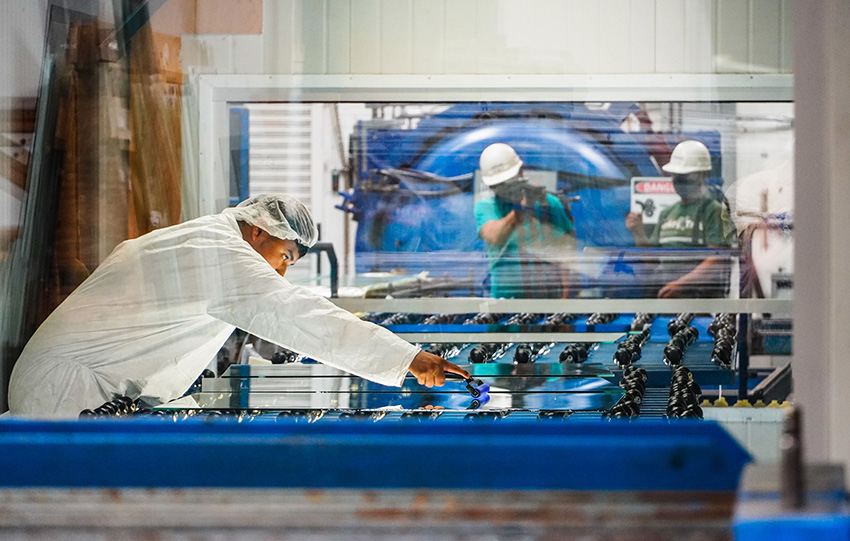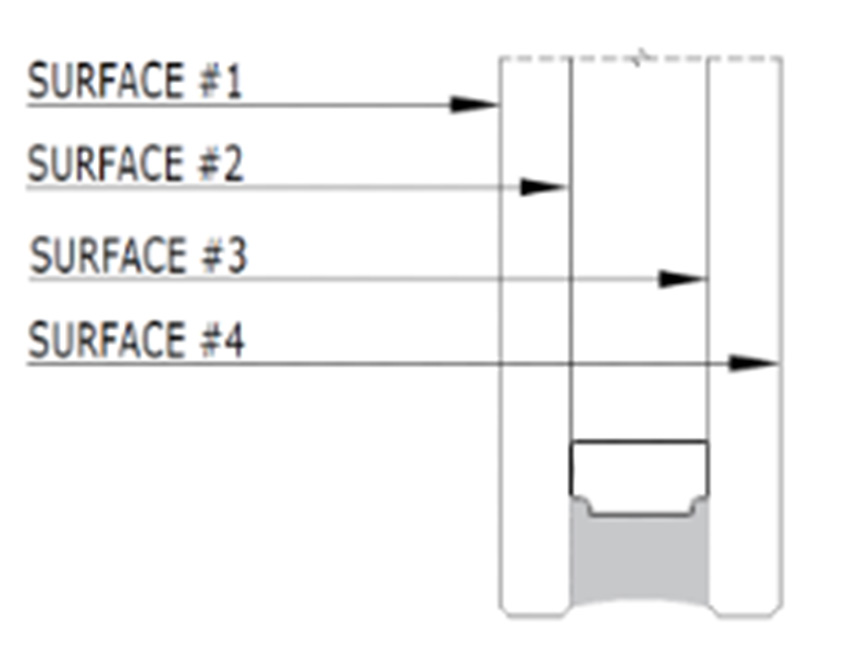Designing with Architectural Decorative Glass
Specialty Glass
In addition to the three types of mass-produced glass, there are some specialty glass types that are produced, usually in small batches and using smaller, simpler equipment. These glass types are generally more appropriate for artistic or architectural glass applications with fewer requirements for safety or strength.
- Cast Glass is created with a “hot cast” surface texture produced by pouring and pressing molten glass onto or into a mold.
- Slumped or “Kiln-Formed” Glass is produced by placing float glass into a kiln over a mold having the desired shape or pattern and heating to the temperature where the glass softens and “slumps” to the form of the mold. The formed glass is then annealed and can be further processed or fabricated.
- Patterned Glass has a surface that has been imprinted with a texture or pattern at high temperatures while still in the molten or malleable state. It is also known as textured or obscure glass.
Whether mass produced or batch produced, the final glass products can be specified and selected by a fabricator to use in architectural building applications.
GLASS FABRICATING
As already noted, glass fabricators typically buy manufactured glass in bulk and then work with it in their shops to fabricate a range of specific architectural products. They often also provide the frames, supports, or other hardware items that are needed to install a glass product into place in a building. Different glass fabricators may have different capabilities or specialties such that not all products are available from all fabricators. Some serve a local market, while others are regional or even national. Some rise to the level of artisans capable of creating unique and exemplary artistic results for buildings that seek to incorporate that level of design.
Some fabricated glass products are fairly standardized, making them easy for architects to select and specify. In many buildings, however, standard products may need custom fabrication to fit into specific openings along specific paths of travel or other conditions. Collaboration with an architectural glass fabricator can help determine limiting factors, such as height limits for certain types of glass based on thickness and makeup. It is also appropriate to review the allowable tolerances for different glass products or installations including thickness, cut sizes, visual distortion, or other factors. Collaboration with a fabricator can also help identify opportunities for cost savings and design options that may not have been obvious.
Based on all the foregoing, the following sections review and address some of the common and available glass fabrications or processes added to manufactured glass.

Photo courtesy of Pulp Studio
Glass fabricating plants employ some well-developed and sophisticated processes to create final architectural glass products out of manufactured glass.
Chemically Strengthened Glass
Glass fabricators may determine that there is a need for strengthening a sheet of annealed glass that is different from heat-strengthened glass or tempered glass. Often, this is the case for a thin sheet of glass that is used for a specialty application but one for which scratch resistance and enhanced strength is important. The solution here is to chemically strengthen the glass, which is essentially a surface finishing process. It is carried out by submersing the annealed glass into a bath of molten potassium salt (potassium nitrate) at about 300°C (570°F). This causes the sodium ions in the glass to be replaced by larger potassium ions from the molten bath. In the process, it creates a much tighter and denser surface that is placed under compression and balanced by the inner core which provides compensating tension.
Generally speaking, this process makes the glass six to eight times stronger than untreated annealed glass. However, even though it is stronger than tempered glass, when it splinters, it still shatters in long pointed splinters like annealed glass. Therefore, it is not suitable for use as code-compliant safety glass. It is, however, quite strong even for very thin glass panels making it suitable for all other uses of glass, where added strength and scratch resistance are needed, such as use in elevator cabs, signage, etc.
Laminated Glass
In many cases, the use of two (or more) sheets of any of the three types of manufactured glass is undertaken to improve strength or achieve other characteristics. A glass fabricator can laminate the sheets together using a standard process. In between the layers, a clear, resilient material is added to add strength and keep the glass together if it receives an impact.
The interlayer material can be made from several readily available choices.
- Polyvinyl Butyral (PVB) is the most used interlayer with very good optical clarity, flexibility, adherence, and affordability. While suitable for most building types, it is not advisable to use it when it is exposed to moisture or water for prolonged periods of time since that may cause delamination.
- Ethylene Vinyl Acetate (EVA) is an alternative that is better suited for interior or exterior applications where the edges may be exposed to high moisture.
- There are also some proprietary interlayers available with a range of properties, but they may not be compatible with PVB or EVA.
- Interlayers can be clear, colored, patterned, or otherwise treated to create different architectural or artistic effects. Laminated glass offers many advantages, of which safety and security are the best known. Rather than shattering on impact, laminated glass is held together by the interlayer thus reducing risk of injury from shattered glass fragments and the security risk of glass breakage. In geographic locations where extreme weather events are a concern, laminated glass addresses wind and storm resistance as well.
Polished Edges
Sometimes a designer wants to achieve a very clean, sophisticated look using glass, (i.e., for handrails/ balustrades or other features where people will be close to them). Building code requirements can dictate laminated glass for this use, but if the edges of that laminated glass are exposed as part of the design, then special attention needs to be paid to those edges. The exposed edges on glass handrails are an aesthetic detail that shouldn’t be overlooked, so high-quality edgework is imperative for the integrity of the design.
Fortunately, some fabricators have the capability to provide a very precise, polished edge along all sides of a laminated product. Such precision avoids a less appealing aesthetic by providing a high-quality, zero-tolerance finish. This process can be applied to both tempered and annealed laminated glass with very good results.










